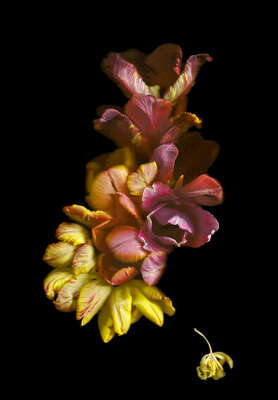

- Exclusive offers
- Inspiring new releases
- Personal invitations to Art Events

WILTING SPLENDOR Photographer Annet van der Voort currently calls her atelier a floral laboratory. Here she observes the transformation of tulips, which she keeps in order to use them in their… Read more
Intro Bio Exhibitions


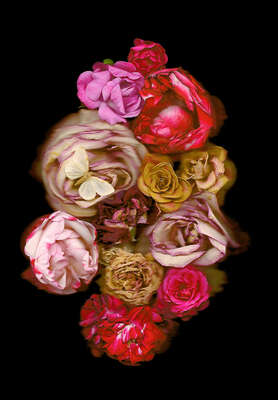

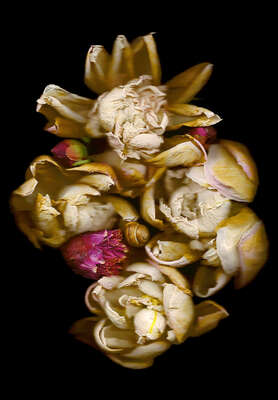

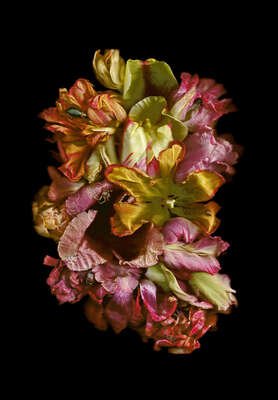

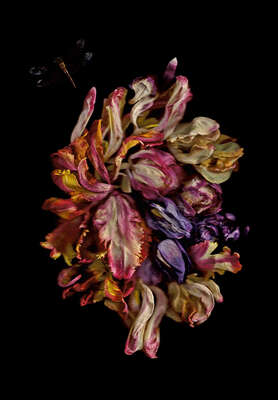

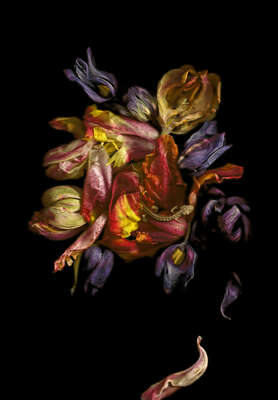

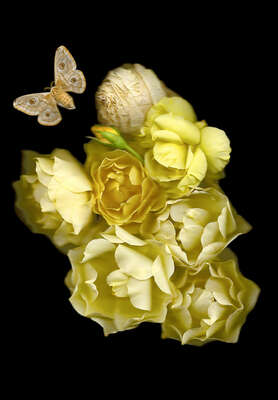

| 2019 | Deutsches Marinemuseum, Wilhelmshaven, Germany |
| 2016 | AnzenbergerGallery (with Pawel Zak), Vienna, Austria |
| 2017 | Galerie, Aelderhooghe, Aalden, Netherlands |
| 2013 | Arbeit & Leben, Düsseldorf, Germany |
| 2012 | Städtische Galerie, Markdorf, Germany |
| 2011 | Kunstmuseum, Ahlen, Germany |
| Städtische Galerie, Iserlohn, Germany | |
| 2010 | FotoFreo, Fremantle, Australia |
| Photaumnales, Beauvais, France | |
| 2009 | DGB, Berlin, Germany |
| 2008 | Kreismuseum Wewelsburg, Büren, Germany |
| 2006 | Stadtmuseum, Münster, Germany |
| 2005 | Rencontres de la Photographie, Arles, France |
| 2004 | Botschaft der Niederlande, Copenhagen, Denmark |
| 2003 | Fotofestival Odense, Denmark |
| 1998 | Museet for Fotokunst (with J.Jensen), Odense, Denmark |
| Deutsches Architekturmuseum, Frankfurt, Germany | |
| 1997 | Kunsthal, Rotterdam, Netherlands |
| 1995 | Galerie Im Kabinett (with E. Vargas), Berlin, Germany |
| 1992 | Alte Synagoge, Essen, Germany |
| 1991 | Bundesgartenschau, Dortmund, Germany |
| 2019 | Athens Photo Festival, Athens, Greece |
| 2018 | Kunstverein, Sundern, Germany |
| 2017 | Museum of Modern Art, Tbilisi, Georgia |
| 2016 | Stadtmuseum Münster, Germany |
| 2015 | Landesmuseum Hanover, Germany |
| 2014 | Deutsches Museum, Munich, Germany |
| Museum Ratingen, Ratingen, Germany | |
| 2013 | Centro Cultural, University Lima, Peru |
| Deutsches Hygienemuseum, Dresden, Germany | |
| Deutsches Naturkundemuseum, Berlin, Germany | |
| Courthouse Gallery, Port Hedland, Australia | |
| FORM Gallery, Perth, Australia | |
| 2012 | Städtische Galerie, Lüdenscheid, Germany |
| 2011 | Getxophoto, Bilbao, Spain |
| 2010 | Beter dan God, Enschede, The Netherlands |
| 2008 | Septembre de la Photographie, Lyon, France |
| 2007 | Rencontres de la Photographie, Arles, France |
| La Filature, Mulhouse, France | |
| Kunstspeicher Würzburg, Germany | |
| 2006 | Langhals galleri, Prague, Czech Republic |
| Gasunie, Groningen, Netherlands | |
| Festival of photography, Kaunas, Lithuania | |
| 2005 | Noorderlicht Photofestival, Groningen, Netherlands |
| Imagine China Gallery, Shanghai, China | |
| 2004 | Photofestival Exposure, Hereford, UK |
| 2001 | Nikolaj Art Center, Copenhagen, Denmark |
| Museet for Fotokunst, Odense, Denmark | |
| 1999 | Monat der Fotografie im Ruhrgebiet, Dortmund, Germany |
| 1998 | Zomer van de Fotografie, Antwerp, Belgium |
| Neue Gesellschaft für Bildende Kunst, Berlin, Germany | |
| 1997 | Mois de la Photo, Montreal, Canada |
| 1995 | National Museum of Photography, Bradford, UK |
| 1990 | Salon des Refusés, Dortmund, Germany |
Visit LUMAS USA!
Delivery to your country is not possible from this site.
If you would like to place an order, please visit LUMAS USA.